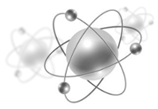
동향
Home > DB > 동향
| Iron-catalysed tritiation of pharmaceuticals | |||
|---|---|---|---|
| 분류 | RI ADME | 조회 | 5692 |
| 발행년도 | 2016 | 등록일 | 2017-03-15 |
| 출처 | 네이쳐 (바로가기) | ||
|
A thorough understanding of the pharmacokinetic and pharmacodynamic properties of a drug in animal models is a critical component of drug discovery and development1, 2, 3, 4, 5, 6. Such studies are performed in vivo and in vitro at various stages of the development process—ranging from preclinical absorption, distribution, metabolism and excretion (ADME) studies to late-stage human clinical trials—to elucidate a drug molecule’s metabolic profile and to assess its toxicity2. Radiolabelled compounds, typically those that contain 14C or 3H isotopes, are one of the most powerful and widely deployed diagnostics for these studies4, 5. The introduction of radiolabels using synthetic chemistry enables the direct tracing of the drug molecule without substantially altering its structure or function. The ubiquity of C–H bonds in drugs and the relative ease and low cost associated with tritium (3H) make it an ideal radioisotope with which to conduct ADME studies early in the drug development process2, 4, 6. Here we describe an iron-catalysed method for the direct 3H labelling of pharmaceuticals by hydrogen isotope exchange, using tritium gas as the source of the radioisotope. The site selectivity of the iron catalyst is orthogonal to currently used iridium catalysts and allows isotopic labelling of complementary positions in drug molecules, providing a new diagnostic tool in drug development.
|
|||
|
|




 이전글
이전글 다음글
다음글